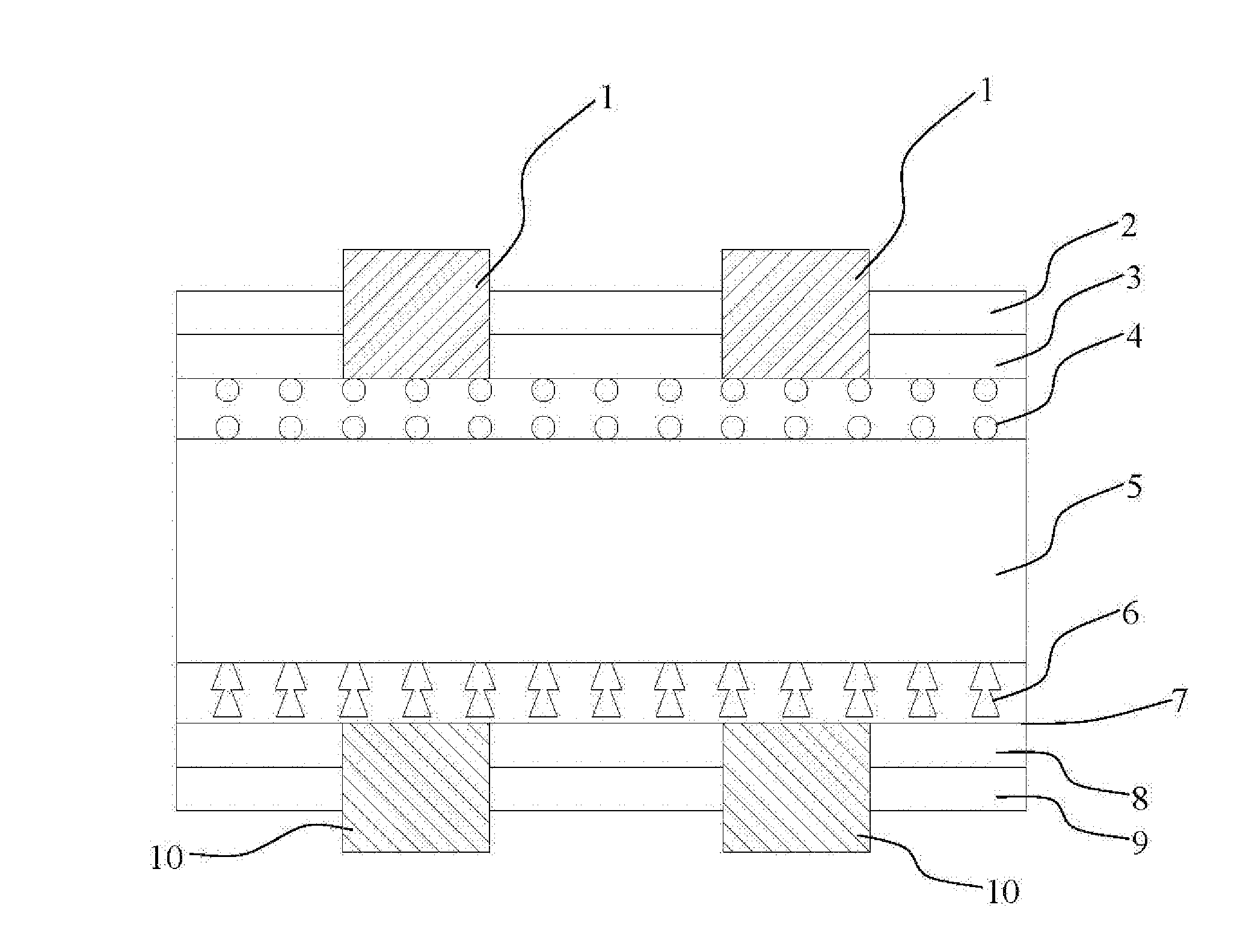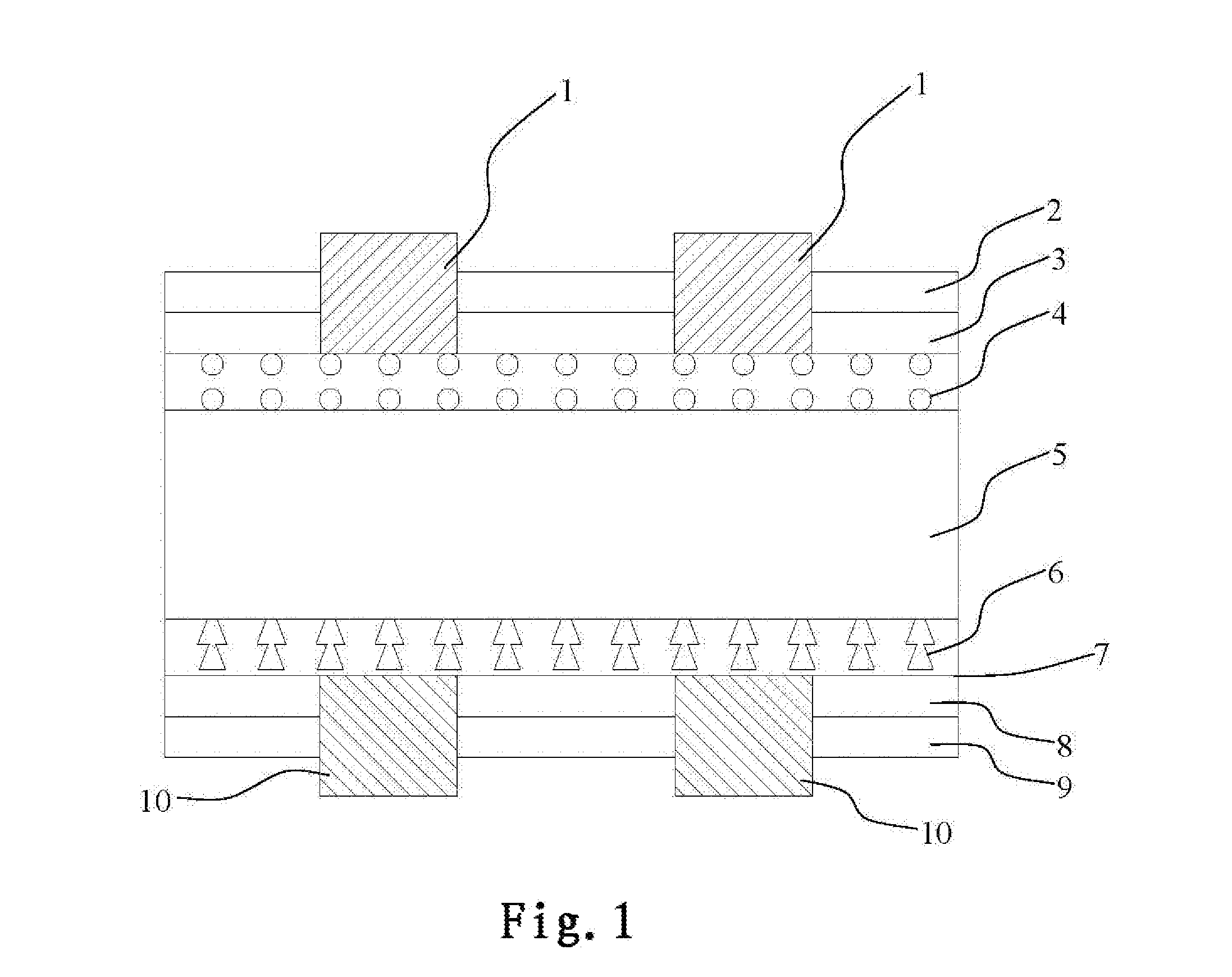High-Efficiency N-Type Bifacial Solar Cell
a solar cell, high-efficiency technology, applied in the direction of basic electric elements, electrical apparatus, semiconductor devices, etc., can solve the problems of high cost, high cost, and high cost of p-type solar cells, and achieve the effect of improving the open-circuit voltage of the cell
- Summary
- Abstract
- Description
- Claims
- Application Information
AI Technical Summary
Benefits of technology
Problems solved by technology
Method used
Image
Examples
Embodiment Construction
[0024]To more clearly understand the objectives, technical solutions, and advantages of the present invention, the present invention will be further described in connection with the accompanying drawings and embodiments. It is noted that the embodiments described herein are merely used to explain the present invention and should not be used to restrict the present invention.
[0025]Please refer to FIG. 1. FIG. 1 is a diagrammatic structural view of a high-efficiency N-type bifacial solar cell according to the present invention. As shown in FIG. 1, the high-efficiency N-type bifacial solar cell according to the present invention includes:
[0026]an N-type cell base 5 including a structuralized surface;
[0027]a P-type doped region 4 formed on a front surface of the N-type cell base;
[0028]a polished passivation layer 7 formed on a back surface of the N-type cell base 5 by etching;
[0029]an N+ passivation layer 6 formed by doping phosphorus into a top portion of the polished passivation layer...
PUM
 Login to View More
Login to View More Abstract
Description
Claims
Application Information
 Login to View More
Login to View More - R&D
- Intellectual Property
- Life Sciences
- Materials
- Tech Scout
- Unparalleled Data Quality
- Higher Quality Content
- 60% Fewer Hallucinations
Browse by: Latest US Patents, China's latest patents, Technical Efficacy Thesaurus, Application Domain, Technology Topic, Popular Technical Reports.
© 2025 PatSnap. All rights reserved.Legal|Privacy policy|Modern Slavery Act Transparency Statement|Sitemap|About US| Contact US: help@patsnap.com


